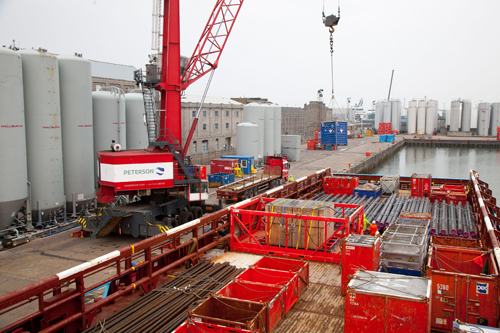 NYC-based PIRA Energy Group reports that PIRA is cautiously optimistic the global economy will withstand the Fed's policy shift. In the U.S., stock build slows. In Japan, crude runs perk up, crude stocks draw. Specifically, PIRA's analysis of the oil market fundamentals has revealed the following:
NYC-based PIRA Energy Group reports that PIRA is cautiously optimistic the global economy will withstand the Fed's policy shift. In the U.S., stock build slows. In Japan, crude runs perk up, crude stocks draw. Specifically, PIRA's analysis of the oil market fundamentals has revealed the following:
World Oil Market Forecast, September 2014
PIRA is cautiously optimistic the global economy will withstand the Fed's policy shift and lift into next year with growth above trend. Despite this, and a rebound in oil demand growth, oil market balances are forecast to deteriorate in 2015. Low first half 2014 stocks hid blemishes but now that inventories have rebuilt.
U.S. Stock Build Slows
Overall inventories increased this past week with crude stocks declining, while product stocks increased. The product inventory increase was 4 million barrels greater than the week earlier as reported demand fell, product imports increased and runs were trimmed. Runs were higher than PIRA forecast as the industry ran just about every bit of capacity it could to take advantage of attractive margins before capacity goes down for maintenance.
Japanese Crude Runs Perk Up, Crude Stocks Draw
Crude runs rose and crude imports declined such that crude stocks drew. Finished product stocks continued rising. A good part of the rise has been in kerosene, which is strictly seasonal. But gasoline and gasoil have also posted modest stock builds. Refining margins remain soft.
Latin America Oil Market Forecast
Latin American refining capacity is constrained in 2014 by refinery maintenance leading to increased product import growth and higher crude exports, particularly in the 4th quarter. Latin American economic growth prospects have been ratcheted down in the last few months. With slower demand growth and returning/expanded refinery capacity next year, product import growth will not be as strong. Nearly all other Latin American countries are also seeing substantial product imports from the United States which supplies about 80% of regional import needs for diesel.
Asia Leads World LPG Markets Lower
November propane FEI futures fell 5.1% to $821/MT, the lowest price in six weeks. The markets are posturing for tomorrow's announcement of October contract prices by Aramco. The latest CP futures markets are betting that propane CPs are lowered by $10/MT, while the weighted average of September trading indicates that prices could remain unchanged from September at $745/MT. Butane's premium to propane was stable in September, falling $3 to $34/MT.
Ethanol Prices Plummet
The downward spiral in U.S. ethanol prices accelerated, with values pressured by soaring inventories, weak consumption, and higher production. Cash margins for ethanol manufacture declined for the fifth straight week to the poorest value since February.
The information above is part of PIRA Energy Group's weekly Energy Market Recap - which alerts readers to PIRA's current analysis of energy markets around the world as well as the key economic and political factors driving those markets.


 December 2013.
December 2013. NYC-based
NYC-based  In many of the key deepwater markets, estimated to be worth $72bn by 2018, E&P and OFS companies alike are exposed to challenging local content requirements. Local content agreements are typically motivated by a desire to stimulate industrial development, and promote technology transfer. A typical local content agreement stipulates that E&P companies must procure a minimum percentage of equipment and services from local contractors. Recent examples can be seen in countries such as Brazil (Petrobras new-build FPSO units to use domestically-built hulls), Angola (BP partnering with Sonangol) and Nigeria (Total utilising a 90% local work force for the AKPO FPSO).
In many of the key deepwater markets, estimated to be worth $72bn by 2018, E&P and OFS companies alike are exposed to challenging local content requirements. Local content agreements are typically motivated by a desire to stimulate industrial development, and promote technology transfer. A typical local content agreement stipulates that E&P companies must procure a minimum percentage of equipment and services from local contractors. Recent examples can be seen in countries such as Brazil (Petrobras new-build FPSO units to use domestically-built hulls), Angola (BP partnering with Sonangol) and Nigeria (Total utilising a 90% local work force for the AKPO FPSO). Helix Energy Solutions Group, Inc
Helix Energy Solutions Group, Inc